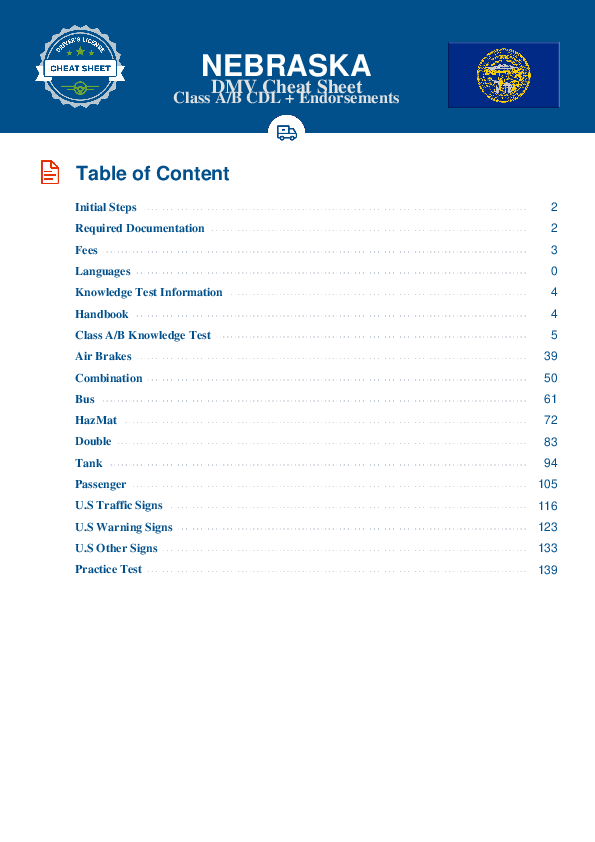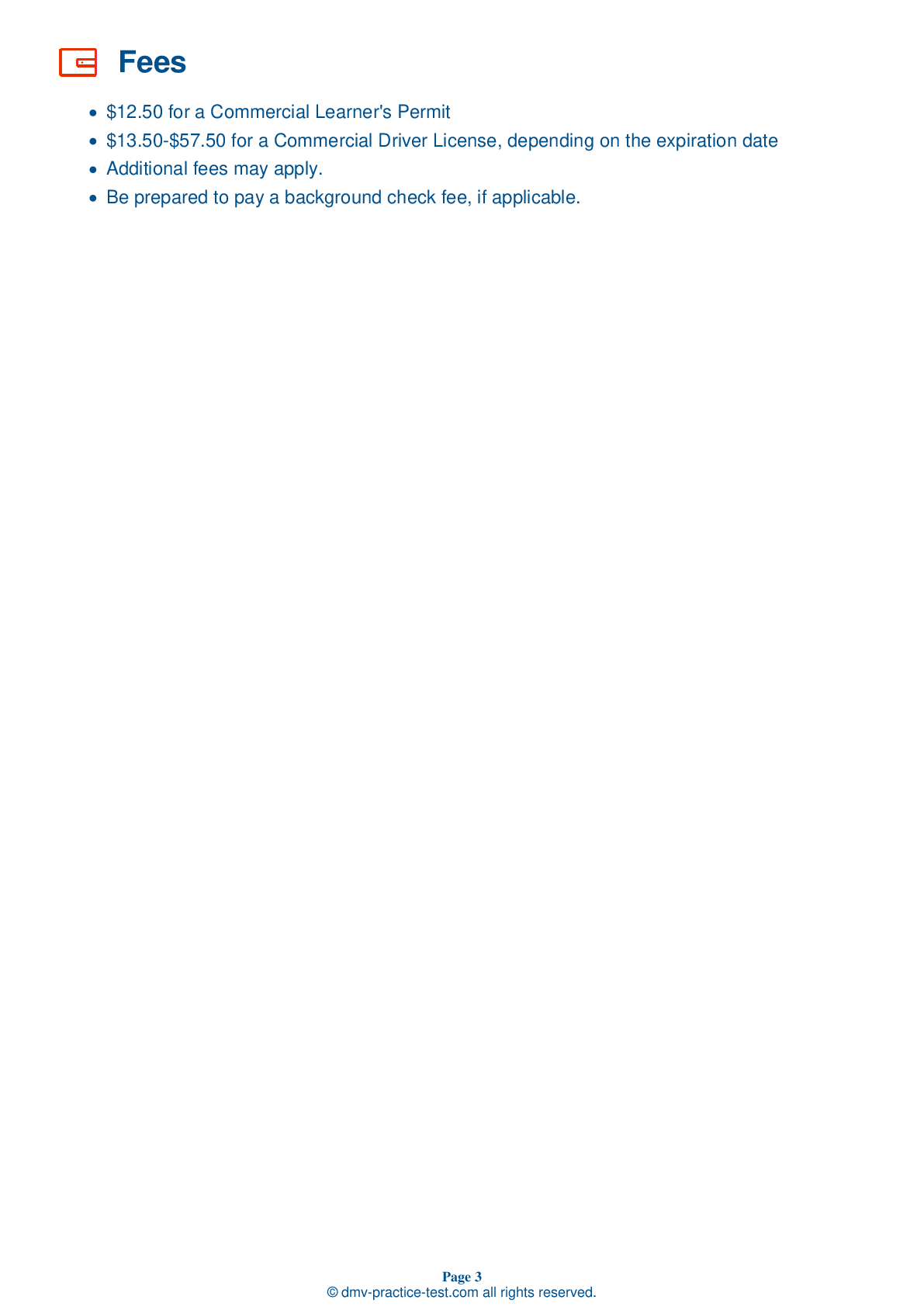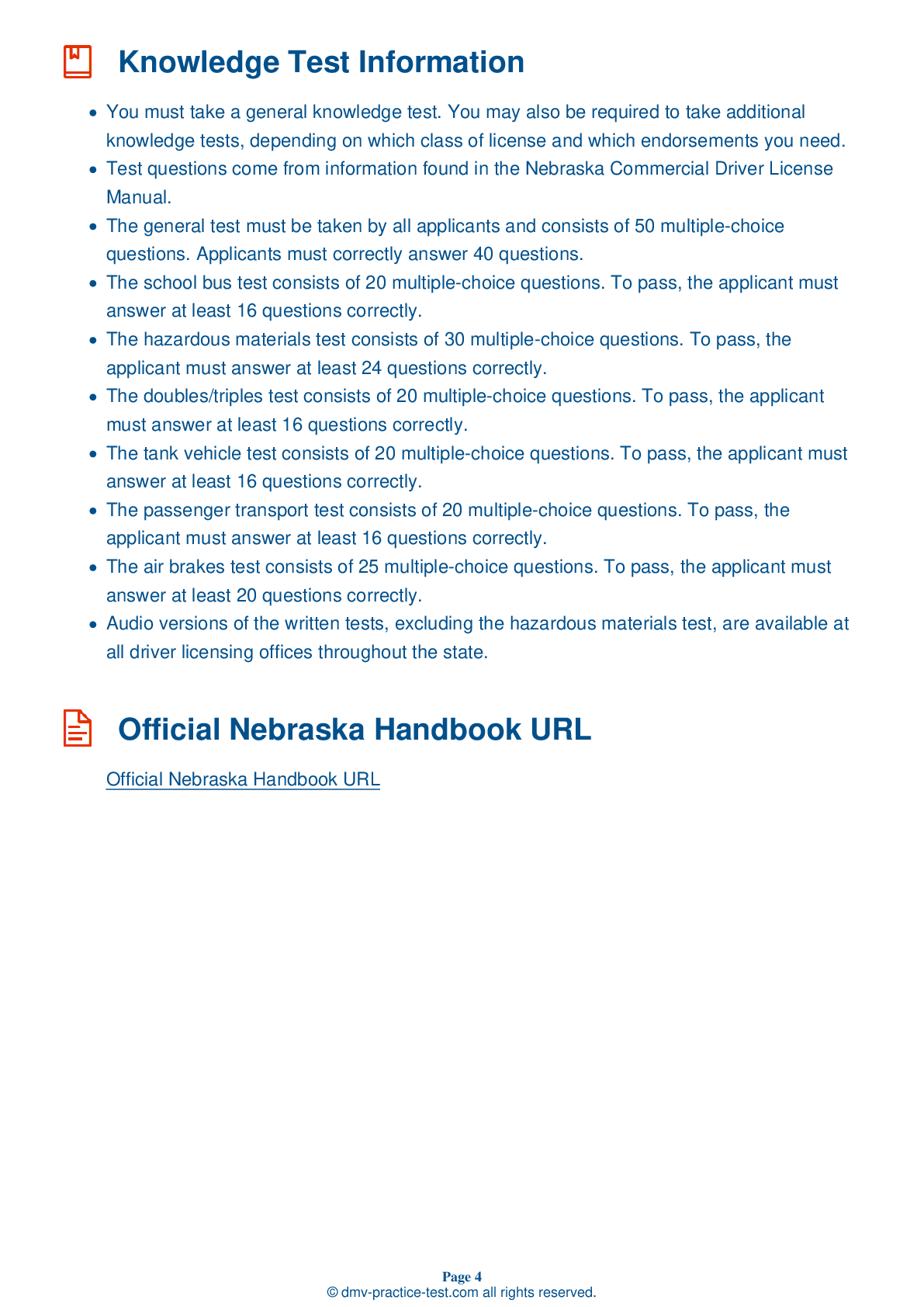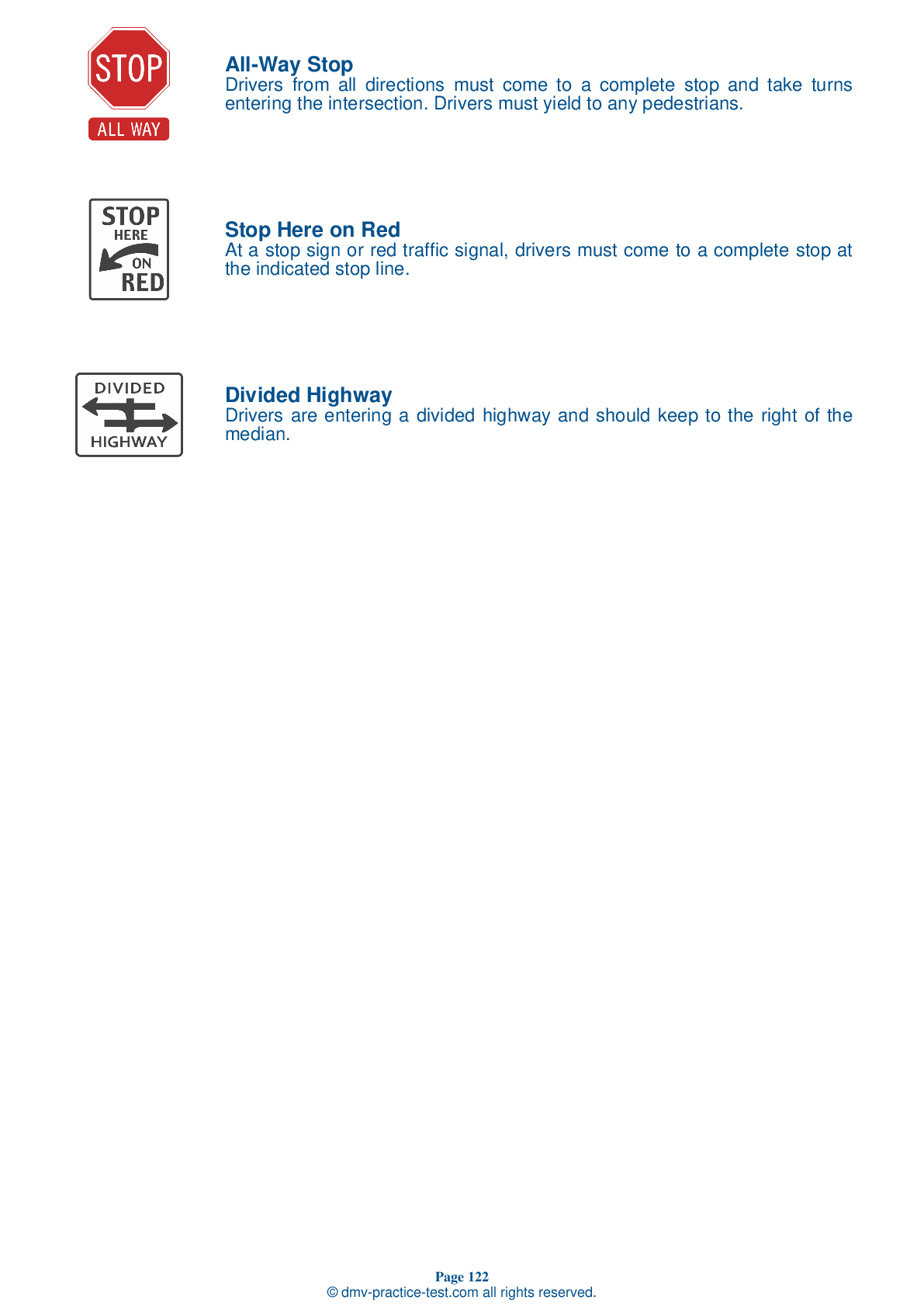Class A Driving Test | Nebraska 2025 #2 Page 3 of 7
Train for FREE online with our Nebraska class A license test. The official exam test consists of several obligatory parts, with all of them checking your knowledge of different blocks of road rules. If you need to obtain a NE CDL class A permit in 2025, practice as much as possible. Free sample tests published on our website will help you check and improve your knowledge and boost your grades. Please bear in mind that CDL class A requirements may vary from state to state.
15 . If being tailgated, you should open up your following distance.
If someone is tailgating you, it is a good idea to open up the space ahead of your vehicle to make it easier for the driver to pass you. Increasing your speed is not a good idea because the driver may continue to tailgate you at the higher speed, only increasing the danger.
16 . Truck tractors with air brakes built on or after March 1, 1997 must be equipped with:
Truck tractors with air brakes built on or after March 1, 1997 must be equipped with an Anti-Lock Braking System (ABS).
17 . In very hot weather, tires may catch fire.
Tires are especially prone to overheating in very hot weather. Under such conditions, stop driving periodically to ensure that your tires are not at risk of blowing out or catching fire.
18 . Empty trucks often take a shorter distances to come to a complete stop than fully-loaded trucks.
The brakes, tires, springs, and shock absorbers on heavy-duty vehicles are designed to work best when the vehicle is fully loaded. Empty trucks require longer distances to stop because their lighter weight allows them less traction.
19 . Noting the engine speed is one way to determine when to upshift.
There are two indicators that determine when you need to shift into a higher gear. One indicator is the engine speed (rpm). You should read your vehicle's manual to learn its rpm range and shift up when you reach the top of that range. The other indicator is road speed (mph). You should learn which speeds each gear can accommodate, then keep an eye on the speedometer and shift up as needed.
20 . How many seconds of following distance per every 10 feet of vehicle should you maintain when traveling more slowly than 40 mph?
When traveling at speeds below 40 mph, you should maintain at least one second of following distance for every 10 feet of your vehicle's length. At higher speeds, add an additional second.
21 . If stopped on the side of the road, how should you alert other motorists?
If you must stop on the side of the road, it is important to turn on your four-way emergency flashers to warn other road users.
See the exact questions that will be on the 2025 Nebraska DMV exam.
99.2% of people who use the cheat sheet pass the FIRST TIME
Lillian MCcranie explains how our CDL study guide was helpful in passing the exam and recommends it to everyone.
Cameron tells us how he purchased the CDL exam, and found it to be a useful tool which helped him pass the exam and find a job.



